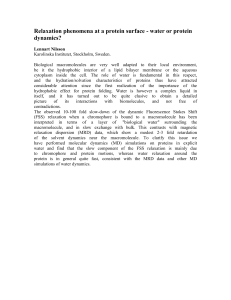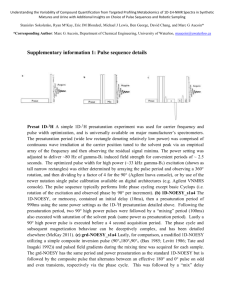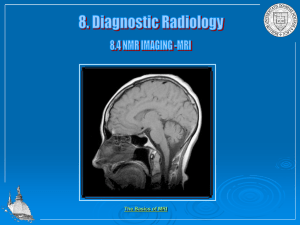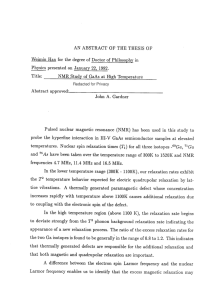Supplementary Information (doc 26K)
advertisement
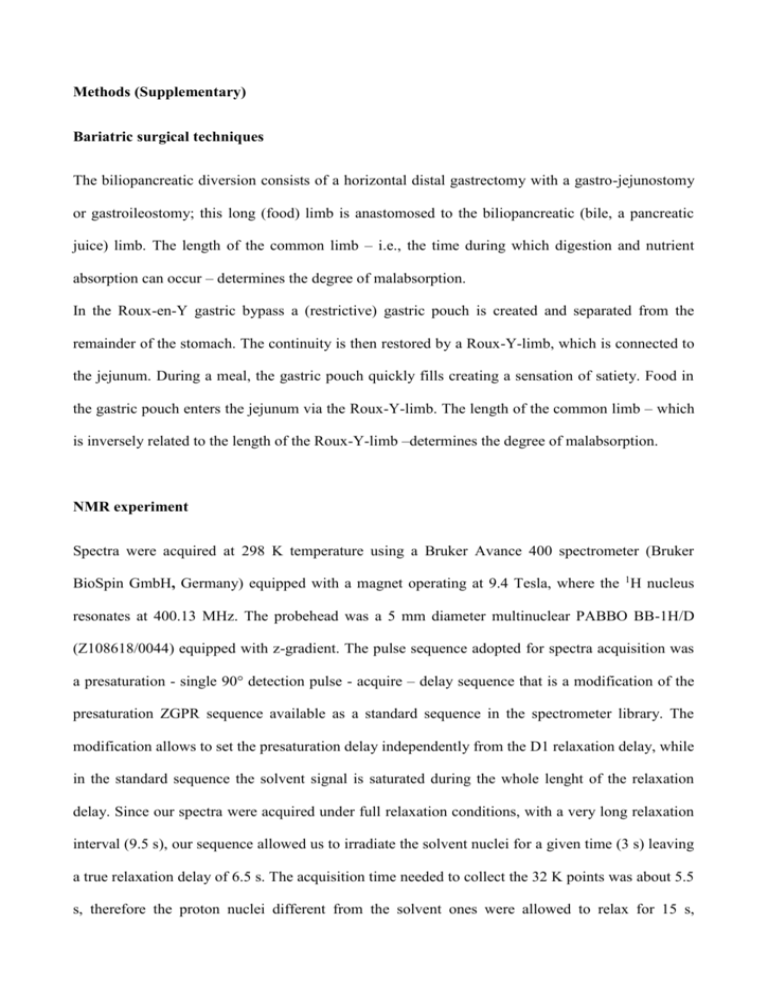
Methods (Supplementary) Bariatric surgical techniques The biliopancreatic diversion consists of a horizontal distal gastrectomy with a gastro-jejunostomy or gastroileostomy; this long (food) limb is anastomosed to the biliopancreatic (bile, a pancreatic juice) limb. The length of the common limb – i.e., the time during which digestion and nutrient absorption can occur – determines the degree of malabsorption. In the Roux-en-Y gastric bypass a (restrictive) gastric pouch is created and separated from the remainder of the stomach. The continuity is then restored by a Roux-Y-limb, which is connected to the jejunum. During a meal, the gastric pouch quickly fills creating a sensation of satiety. Food in the gastric pouch enters the jejunum via the Roux-Y-limb. The length of the common limb – which is inversely related to the length of the Roux-Y-limb –determines the degree of malabsorption. NMR experiment Spectra were acquired at 298 K temperature using a Bruker Avance 400 spectrometer (Bruker BioSpin GmbH, Germany) equipped with a magnet operating at 9.4 Tesla, where the 1H nucleus resonates at 400.13 MHz. The probehead was a 5 mm diameter multinuclear PABBO BB-1H/D (Z108618/0044) equipped with z-gradient. The pulse sequence adopted for spectra acquisition was a presaturation - single 90° detection pulse - acquire – delay sequence that is a modification of the presaturation ZGPR sequence available as a standard sequence in the spectrometer library. The modification allows to set the presaturation delay independently from the D1 relaxation delay, while in the standard sequence the solvent signal is saturated during the whole lenght of the relaxation delay. Since our spectra were acquired under full relaxation conditions, with a very long relaxation interval (9.5 s), our sequence allowed us to irradiate the solvent nuclei for a given time (3 s) leaving a true relaxation delay of 6.5 s. The acquisition time needed to collect the 32 K points was about 5.5 s, therefore the proton nuclei different from the solvent ones were allowed to relax for 15 s, complying with the full relaxation condition after a 90 degree pulse. The lenght of the detection pulse was calibrated previously to the acquisition of each spectrum, the spectral width was set to 5995.02 Hz (12 ppm), 64 scans were collected for each spectrum.


